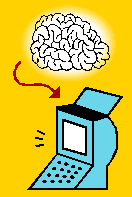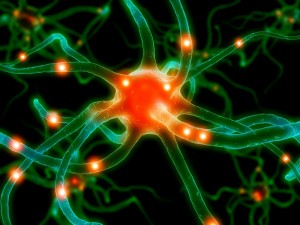
Before you get depressed over not understanding why your noggin is prone to depression (I’ve been there, have you?), take some comfort in the fact that the human brain is the most complex computer in the world. The Universe, even. Neither Intel and AMD nor the Martians have come even close to developing anything as advanced as what God and/or evolution assembled; our brains consist of a hundred billion neurons, connected by a hundred thousand billion synapses. If a simple toaster can short-circuit after 367 days of use (two days past the expiry of the one-year warranty, of course), then imagine the opportunity for creative mayhem in our craniums!
The upside is that having a hundred billion neurons gives us a lot of freaking processing power, and with that, we can do things like grow mini-brains in labs and study them to further understand brain development. This experiment was conducted at the Institute of Molecular Biotechnology in Vienna, Austria, where scientists used stem cells to form brain tissue, which then grew into distinct regions of the brain.
Since these lab brains lack a circulatory system to feed them, they only grew to a size of three millimeters, but have already proven useful for things such as studying microcephaly, a genetic disorder that results in a smaller-than-normal brain size. One of the researchers, Dr Juergen Knoblich, said, “Ultimately we would like to move towards more common disorders like schizophrenia or autism. They typically manifest themselves only in adults, but it has been shown that the underlying defects occur during the development of the brain.”
 Over in neighboring Switzerland, furthering the quest for advancement in neuroscience, the Human Brain Project (HBP) launched last fall. HBP encompasses 80 European institutions, partnering in order to create a complete simulation of the human brain. Speaking of Dell and microprocessors, in order to accomplish this, new supercomputers must be built, ones that match the brain’s power and complexity. Several manufacturers, including Dell, have committed to building the first exascale machines by approximately 2020. To be brain-like, they’re expected to have 1,000 times more power than today’s supercomputers, and will still forget birthdays and anniversaries, just to keep things real.
Over in neighboring Switzerland, furthering the quest for advancement in neuroscience, the Human Brain Project (HBP) launched last fall. HBP encompasses 80 European institutions, partnering in order to create a complete simulation of the human brain. Speaking of Dell and microprocessors, in order to accomplish this, new supercomputers must be built, ones that match the brain’s power and complexity. Several manufacturers, including Dell, have committed to building the first exascale machines by approximately 2020. To be brain-like, they’re expected to have 1,000 times more power than today’s supercomputers, and will still forget birthdays and anniversaries, just to keep things real.
To say that the HBP is an ambitious undertaking is like calling The Milky Way big. The project will cost about $1.6 billion, and aims to both develop new treatments for brain disease and clear the way for new computing technologies that will have brain-like intelligence. Professor Patrick Aebischer of EPFL (one of Switzerland’s technical universities) says he believes the 21st century will be the century of the brain.
Finally, not to be outdone, Germany announced a pretty cool accomplishment of its own last summer. After slicing the brain of a deceased woman into 7,400 half-a-hair-width pieces, researchers stained, scanned, and then digitally reassembled the pieces to produce the first high-resolution 3D model of the human brain. Called the “Big Brain,” it will allow neuroscientists to study human responses and map them to individual layers of the brain’s cortex, even down to a cellular level.
 Add these three initiatives to the American-led one I wrote about last year, the Human Connectome Project, and soon you might start to feel like we’re on the verge of some remarkable advances in terms of understanding, preventing and treating mental illnesses. With no disrespect to Pfizer, figuring out how to make a penis stay erect was easy. Figuring out the chemical and electrical flows between a hundred thousand billion synapses, though? It’s the perfect start to a joke: “How many scientists does it take to… .” And if Viagra was science picking the low-hanging fruit first, now we’re finally about to climb the tree.
Add these three initiatives to the American-led one I wrote about last year, the Human Connectome Project, and soon you might start to feel like we’re on the verge of some remarkable advances in terms of understanding, preventing and treating mental illnesses. With no disrespect to Pfizer, figuring out how to make a penis stay erect was easy. Figuring out the chemical and electrical flows between a hundred thousand billion synapses, though? It’s the perfect start to a joke: “How many scientists does it take to… .” And if Viagra was science picking the low-hanging fruit first, now we’re finally about to climb the tree.
So what do you guys think? And, bonus question, how do you write a hundred thousand billion in numerals? (I tried to find it online, but couldn’t figure it out, so y’all would be doing me a favor by answering that one!)
